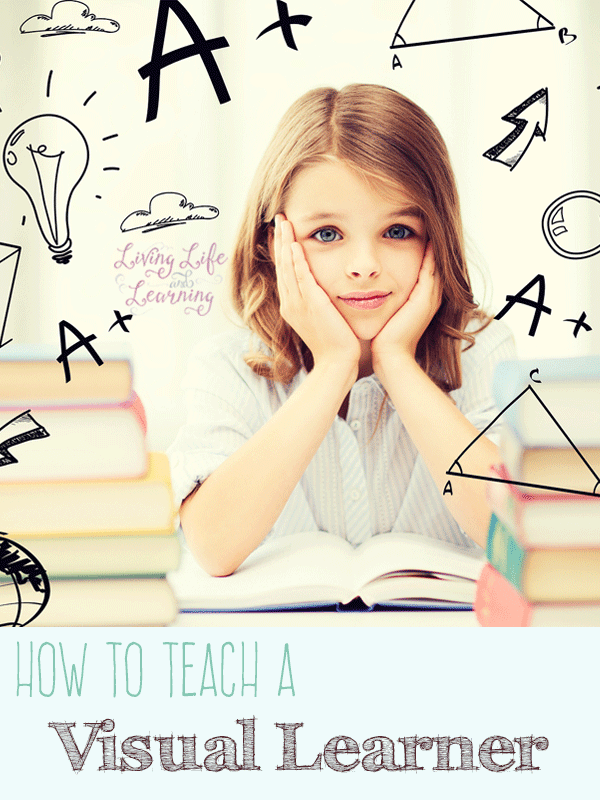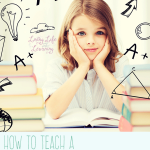How to Teach a Visual Learner
Ready to learn how to teach a visual learner? Do you have a visual learner in your homeschool? Are you a visual learner yourself? That may make things easier for you as a teacher. However, I am not a visual learner at all. I learn best through auditory means which makes teaching a visual learner more challenging.
It took a while to realize that I had a visual-spatial learner, once I realized it though, I read everything I could on VSLs. Turns out my hubby is one too.
I really had to change my way of thinking because I’d explain things over and over again but because I wasn’t showing him how to do things, it was becoming frustrating for M1.
The best thing that worked for us has been working everything out on the whiteboard. I don’t know why, but writing things out with a pencil and paper seems too strenuous or boring, so we now do all our math on the whiteboard.
Make certain to check out our Homeschool Planner Printables for even more information and ideas on learning at home.

This post may contain affiliate links meaning I get commissions for purchases made through links in this post. Read my disclosure policy here.
How to Teach a Visual Learner
The true statement about kids and homeschooling is that all kids learn differently. Some kids learn by hands-on while others learn by watching and then doing. And isn’t the beauty of being able to homeschool? Finding a way to promote the best way for our kids to learn is great!
If you’re ready to learn how to teach a visual learner, there are some great tips below that can help. Once you get into the swing of things, you’ll find out what works best for you and your learner.
Benefits of homeschooling
The great part about homeschooling is that it’s a simple way to find out what works for your child and what doesn’t. You’ll get to slow down, plan out your days and weeks and focus on what your child thrives at and areas that they need more attention. Best of all, homeschooling affords you the chance to figure out how they LOVE to learn.
Recommended Books for Visual Learners
Visual-spatial learners and visual learners may learn differently than you, read what you can about them. If this is a new learning concept for you, that’s fine – just take the time to educate yourself on how you can best be there for your child so that they can continue to grow.
Below are a few book recommendations for parents to read to add even more great ideas on how you can create a strong learning environment for your visual learner.
Visual-Spatial Learners: Understanding the Learning Style Preference of Bright But Disengaged StudentsSmart but Scattered: The RevolutionaryPicture It!: Teaching Visual-Spatial LearnersUpside-Down Brilliance: The Visual-Spatial LearnerUnicorns Are Real: A Right-Brained Approach to Learning (Creative Parenting/Creative Teaching Series)Raising a Left-Brain Child in a Right-Brain World: Strategies for Helping Bright, Quirky, Socially Awkward Children to Thrive at Home and at School
Tips for Teaching a Visual Learner
While there is never a one-size-fits-all approach, there are certain things that you can be certain that you’re incorporating into your days to help your visual learner continue to grow and learn.
Some fun things to add to your homeschool:
- videos
- experiments
- graphic organizers
- notebooks
- lapbooks
- drawing
- pictures
- different color markers/crayons
- dioramas
All of these learning activities are a great way for your child to learn and be a part of visual learning. You can use them all or you can use just a few to encourage your child to learn the way that they want.
Remember that these are just a few ideas as well. The best thing that you can do when it comes to figuring out what works best for your child is to talk to them about what motivates and excites them to learn. They’re really going to be your biggest resource and the one that can tell you what motivates them to want to learn.
Examples of visual learning
We complete experiments first and then complete a lapbook minibook or narration page afterward. M1 really gets a sense of the overall picture and then can easily break things down into more detail in his writing.
When your child has finished reading a book and you’d like them to complete a report on it, think again. Instead, have them create a diorama out of paper, cardboard, or even legos. Let them draw a picture rather than a 3-page report. Let them create a comic book to summarize the story. Have them create their own video using toys or animals or whatever they so please.
Don’t limit their work to paper and pencil. There are so many ways for them to record what they’ve learned.
Our favorites are lapbooks and notebooks, the information is stored each differently in their notebook, they remember pictures better than they do text.
These are just a few ways that you can have visual learning happening daily in your home. All of these examples are just ideas and things that you can try.
Remember that homeschooling gives you the chance to find out what works best for you and your family. You can try something and then switch it to something else if you’d like. This is a simple way to test out the theories that you want to test out and try other things as well.
Using visual learning techniques provides for a way to introduce new learning concepts to your child. This means that your child can easily take their time in learning what works best for them and also find out things that they enjoy as well.
More Visual Learner Tips
There are so many great resources that you can use when it comes to being a visual learner. Below are just a few other tips and ideas on how you can try other visual learner tips for you and your family.








Oh, what joy we and our children know when they can spell, write, and read. Delight in learning to teach English like Abigail Adams taught John Quincy Adams, the 6th president of the United States.
When all four members of a student’s neurological TEAM are working together, the student is learning optimally. The TEAM is: Speaking, Hearing, Doing (kinestetic) and Seeing. We guide the teacher to guide the student to speak the words (wisdom) from the teacher. When he speaks and does, he just connected all four of his learning avenues to his brain. Speaking starts the process!
I suggest the teacher use all four members (TEAM) all the time to strengthen weaker members.
I have visual learner and the white board has been wonderful. Sometimes we use it for spelling words, sometimes math, and sometimes just doodling while watching videos. I have noticed that writing with pen and paper seems harder for my daughter than using the white board. Because my daughter is a visual learner, I have found that our online curriculum, Time4Learning (www.time4learning.com) works wonders for her, she likes the colors, movement, and the ability to choose the pace at which she recieves the instruction. I can’t even imagine trying to teach my visual learner with workbook pages or lots of copy work. My daughter loves videos of any sort, and watches a lot of educational science programming. Thanks for brining this up!
My son loves the white board, we go through so many dry erase markers.